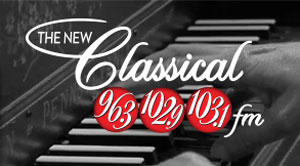An in-depth look at the art of instrument-making: meet luthier Chris Sandvoss

April 17, 2020
Christopher Sandvoss is a luthier based in High River, Alberta, about a half hour outside of Calgary. He founder and Head Instructor of the Canadian Violin Making Institute (CVMI). Surrounded by nature, the school is a first of its kind in Canada, where he and his students create beautiful stringed instruments.
I first met Chris many years ago when we were both students in the music program at the University of British Columbia. He was a few years ahead of me and I was intimidated by this lanky blonde dude, thinking he was a “bad boy viola guy”, so I tended to hurry past him when he was loitering outside the music building. To come across him again some thirty years later and find out he’s this … like, musical spiritual alchemist, turning trees into beautiful instruments … was joyful to me. We’ve had some lovely phone calls and it’s a pleasure being back in touch.
Here’s an in-depth look at the process from wood to beautiful classical music instrument.
First of all, please tell us what a luthier is.
A luthier is someone who makes stringed instruments, such as violins, violas, cellos, basses, guitars, and lutes.It’s the French title for lute makers, who were the first to make violins in the early 16th century.
***
Most people may think of getting a new instrument is just walking into a store and buying one. What you do as a luthier is different – would you say it’s the difference between buying a dress from a chain store vs. approaching a designer to custom design something?
For me, building an instrument for someone is being entrusted to create a legacy. There are many options for people buying instruments; the local violin shop, trips abroad to other dealers, and even online purchases. When I’m approached, it’s because someone wishes to have a unique instrument made for them. The idea that a violin will be created with the person in mind is very special to both parties.
A newly made instrument responds to its owner, as these sounds and physical gestures are created with the player’s imprint. The resonating box can be excited through brute force or subtle persuasion, each eliciting a different response in the range of frequencies that the instrument has to offer and the player’s style and emotional range of expression greatly influences how it develops. As the instrument ages through playing, it learns to move and limber up in the range of frequencies it is being utilized in. Think yoga for instruments … this, in part, is the reason for the desired pedigree of Stradivarius and Guarneri, because these instruments’ full potential was developed by the best musicians throughout history. The lineage of famous players that shaped these instruments ensured that the tonal palettes were always optimized.
***
You talk about the instrument evolving as you make it, and you don’t churn out copies of a Stradivarius or a Guernerius. Tell us more about custom instruments, from a piece of wood to the instrument on stage.
The world is choking with tens of thousands of Stradivarius-modelled instruments. Still to this day, makers are trained in school to copy the workmanship of the legendary maker but sadly usually never venture off to create their own style. In the art world, the equivalently painful constraint would be to demand every graduate to paint exactly like Rembrandt. While this is a beneficial requirement, the downside is rather obvious as we are stuck with a monoculture.
My father taught art, and my earliest educational experiences involved trips to museums and galleries as well as witnessing my father paint and sculpt in his studio, so I was strongly influenced by the creative needs of the human experience. I started making out of curiosity and the first instrument I made had to be one I designed. I allowed myself freedom of choice in the size and shape parameters, and this process determined my path to always start with a blank sheet of paper when designing an instrument. Each one of my instruments is unique in some way. If I were to line them up chronologically you would see a common thread of my design DNA, but none would look like the other. I’m not a factory, but rather an individual that puts my emotional and intellectual range into each instrument.
Starting with the raw materials is always a moment of reverence and awe at the power of nature and its potential. As there are different species involved (spruce, maple, ebony), it is my job to take the disparate traits of each and find the way to optimize their movements to balance out the recipe that ends up in a finely tuned high performance machine. Wood talks to me the moment I pick it up. The tactile responses are even more enhanced when the tools make their way through the material. There is a certain sound a chisel or knife makes when a quality piece of wood is being rendered. This gives me information that I use to determine arching shapes and plate thicknesses, and the time required through the use of hand tools allows for the slowness that’s required for this interaction to occur. I rely on intuition rather than data, as the latter doesn’t allow for the uniqueness each piece of wood presents. The desired result is that each instrument has a powerfully complex voice.

When I varnish an instrument, my mood takes centre stage. I loathe the idea of having a predictable look. Yes, there are certain parameters of colour choices, but the last thing I want to do is create a collection of instruments that all look like they came off a box store shelf. I leave tool marks, brush strokes, and all my humanity of the moment on that instrument. My customer knows that what they own will never be replicated even by my own hand. I can’t pretend when I create. Authenticity is my only measuring stick.
***
Since mid-March, people world-wide are being asked to self-isolate and work from home as much as possible. Is most of your work done in isolation anyway?
I’ve worked in isolation for many years in some capacity or another. Violin making for me is spending many hours a day at the bench. The dynamic and focussed energy required engages my entire being, and shutting out the world is easy. There is only the need to slow down, see and feel in detail, so that nothing is trivialized or overlooked. I feel efficient, productive, and engaged. The act of using one’s mind to manipulate tools, whether it be a hockey stick, a paint brush, or a chisel, is so challenging and rewarding. There is always a better rhythm of movement, a more efficient execution, or unlaboured outcome.
***
In Japan, it could take 5-10 years to apprentice from making the rice to having your own sushi counter. Is being an apprentice with you the same deal?
For someone to apprentice in the violin making craft, the expected classroom time is three years. Some students feel they can get by with less, but once out in the real world, three years is just entry level education. Upon graduation, a student would seek employment in a violin shop and gain experience at the workbench, hopefully with a highly skilled Master as mentor. As with anything, input equals output, so shortcuts are never favourable if a world-class outcome is desired. It’s an extremely competitive market place and the strong have a chance to survive.
***
You were going to launch a summer course and then a full-fledged school – how have those plans changed?
I am launching the Canadian Violin Making Institute and the school building is undergoing improvements to allow for a school schedule. The 5-week Summer Program was slated to start in July, but if this isn’t possible, I have orders to fill until such time that I can let people into the building.
***
Do you hope your instruments have the same legacy and lineage that an instrument like “The Red Violin” did in the 1998 film?
The biggest moment for me is when the instrument is strung up and a bow moves across the strings for the first time. It’s the sound of the newborn, and to know it will elicit emotional responses for many is life affirming. While I can’t predict the path my instruments will take, I’m hopeful that they will bring joy to whomever is at the helm when a melody needs unwinding.
***
What is the highest praise you could receive as a luthier?
The biggest compliment I can get as a luthier are the words “I love this instrument”.

***
Liz Parker is The New Classical FM’s Digital Content Editor. She’s also a piano teacher and stylist, who is spending the lockdown cooking like episodes of “Chopped”. She is mom to furbaby feline #HisMajestyMomo.











